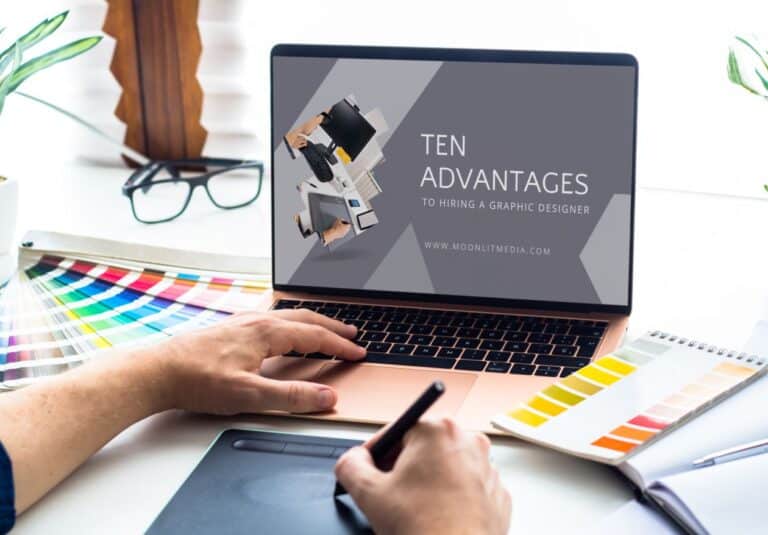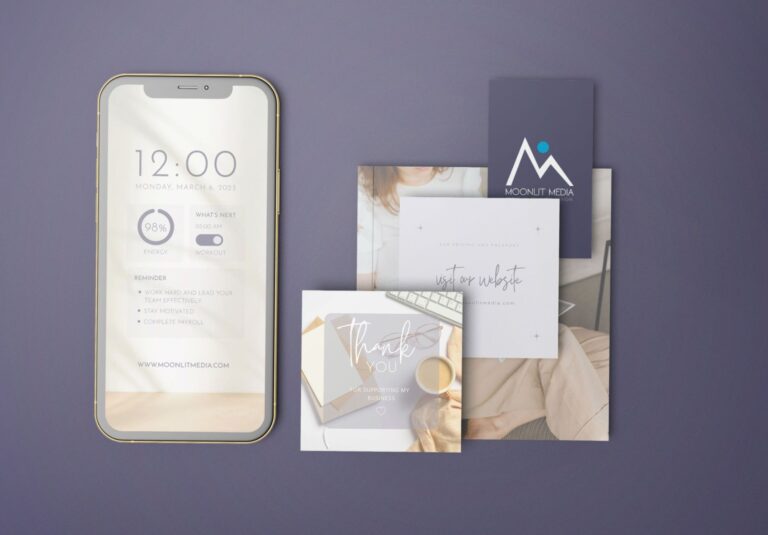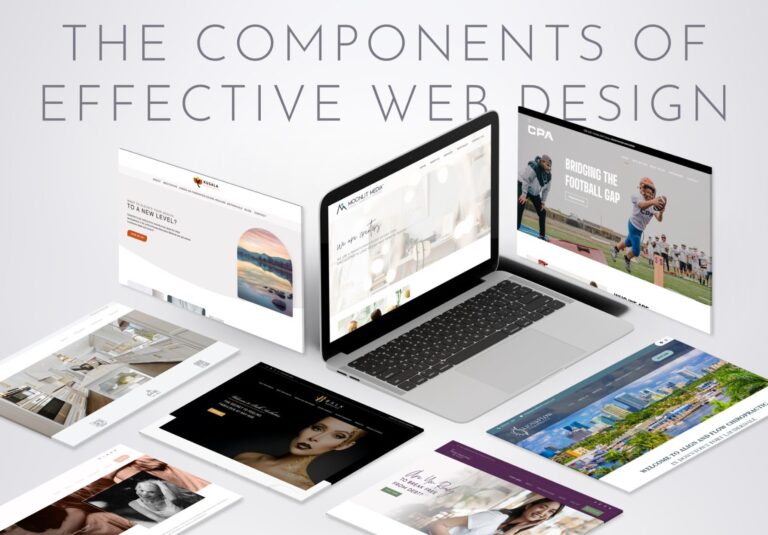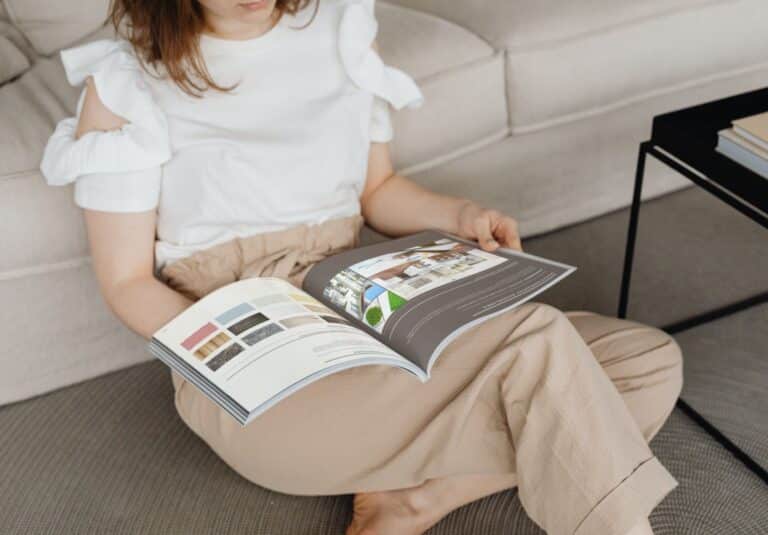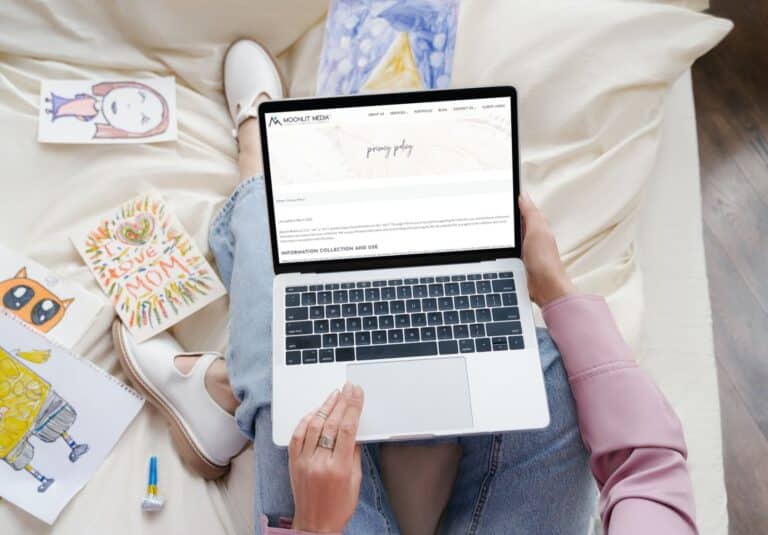AI-generated designs are everywhere. You’ve probably seen them—slick, polished images created in seconds with just a few clicks. Companies are churning out “custom” logos faster than you can say “brand identity,” and it’s tempting to think we’ve cracked the code on design.
But can a machine truly capture what makes your brand special? Can it understand the heart of your business, your values, or the feeling you want your customers to have when they see your logo?
While AI might be lightning-fast at creating some awesome-looking graphics, it’s missing something critical. The nuanced understanding that only human designers bring to the table. In a world where we’re more and more tethered to our devices, one could argue that human touch matters now more than ever.

Design Is Much More Than Pretty Pictures
Here’s what most people don’t realize about logos. They’re not just decorative elements you slap on your business cards. A great logo is strategy, psychology, and emotion all rolled into one tiny visual package.
When a human designer sits down to create your logo, they’re thinking about questions like: What does your brand stand for? Who are you trying to reach? What feeling do you want to evoke? Are you a playful startup or a serious law firm? Do you want to appear cutting-edge or trustworthy and established? How will this look plastered on a billboard? Will it be as legible embroidered on a polo as it will be printed on a poster?
These considerations are the foundation of effective design. A skilled designer translates your brand values into visual language. They choose colors that speak to your target audience, shapes that reflect your personality, and styles that position you correctly in your market.
AI, on the other hand, outputs visuals without meaning. It can create something that looks professional, sure, but it’s throwing visual elements together based on patterns it’s learned from existing designs. There’s no strategy, no emotion, no understanding of your unique story, and no consideration of how that design will work in the real world of your business.
Typography Choices Tell Stories
Let’s talk about fonts for a second. You might think a font is just a font, but typography is one of the most powerful tools designers have for communicating tone and personality.
Consider how different these feel: a tech startup using a sleek, modern sans-serif versus a law firm using a traditional serif font. Or a children’s brand using playful, rounded letters versus a luxury brand using elegant, thin typography. Each choice sends a specific message about who you are and what you offer.
Human designers understand these subtleties. They notice things like kerning (the spacing between letters), legibility across different sizes and mediums, and how different fonts pair together. They consider whether your logo will work on a tiny social media avatar, a massive billboard, or embroidered on a polo shirt.
AI tends to pick trendy but shallow typography. It might choose a font that looks cool in the moment but doesn’t serve your long-term brand strategy. It’s like choosing an outfit based only on what’s trendy right now, without considering whether it fits your body, your life, or your personal style.

Visual Metaphors and Symbolism
Some of the most iconic logos in the world work because they operate on multiple levels. Take the Nike swoosh, for example. On the surface, it’s a simple checkmark-like shape. But it also represents motion, speed, and victory. Or consider the Apple logo: it suggests knowledge, innovation, and taking a bite out of the status quo.
These aren’t accidents. Human designers craft logos with layered meaning, creating visual metaphors that resonate with audiences both consciously and subconsciously. They understand how symbols work in our minds and culture.
AI struggles with this kind of deeper symbolism. It might create something that looks nice, but it often ends up being either too literal (a restaurant gets a fork and knife) or completely random (a restaurant gets a geometric shape that means nothing). There’s no thoughtful connection between the visual and the brand’s deeper story. This is where the magic happens in human design—when someone looks at your logo and instantly “gets” what you’re about, even if they can’t articulate why.

Cultural Context Matters
Design doesn’t exist in a vacuum. Colors, shapes, and symbols carry different meanings across cultures, generations, and industries. A human designer brings this cultural awareness to every project. For example, white represents purity and cleanliness in Western cultures, but it’s associated with mourning in some Eastern cultures. Red signals excitement and energy in the US, but it can represent good fortune in China. A designer working with a global brand needs to navigate these nuances carefully.
Beyond global considerations, designers understand industry conventions and when to follow or break them. They know that certain colors work better for healthcare (blues and greens suggest trust and healing) while others work for entertainment (bright, energetic colors that grab attention).
AI lacks this cultural sensitivity. It might create a beautiful design that completely misses the mark for your specific audience or accidentally incorporates elements that send the wrong message.
The Human Connection in Creative Decisions
At the end of the day, design is about human connection. Your logo, your brand identity, your website, your visual presence, these things need to resonate with real people making real decisions about whether to trust you with their business.
Human designers bring empathy to the process. They can put themselves in your customer’s shoes and think about what would appeal to them, what would build trust, what would make them choose you over your competition. They also bring intuition and creative problem-solving that goes beyond pattern recognition. Sometimes the best design solutions come from unexpected places. A conversation with a client, a random observation, or a creative leap that no algorithm could predict can all lead to a design breakthrough.
Your Brand Deserves Better Than Templates
AI tools are very tempting. They’re fast, they’re cheap, and they can produce something that looks decent. But what you’re really getting is a template with your name on it. And your business isn’t a template. Your business is a unique combination of your story, your values, your vision. They deserve a visual identity that’s crafted specifically for you, not generated by a machine using parts of other designs.
Craft takes time, skill, and a human brain that can understand what looks good, and also what works for your specific business goals.
Ready for a Logo That Actually Represents You?
If you want a design that truly represents your brand (not just a template with your company name on it), Moonlit Media’s designers are here to help. We take the time to understand your business, your audience, and your goals before we put pen to paper or cursor to screen.
Book a discovery call to chat about your next project. Because your brand deserves more than what AI can offer. Your brand deserves the human touch.



